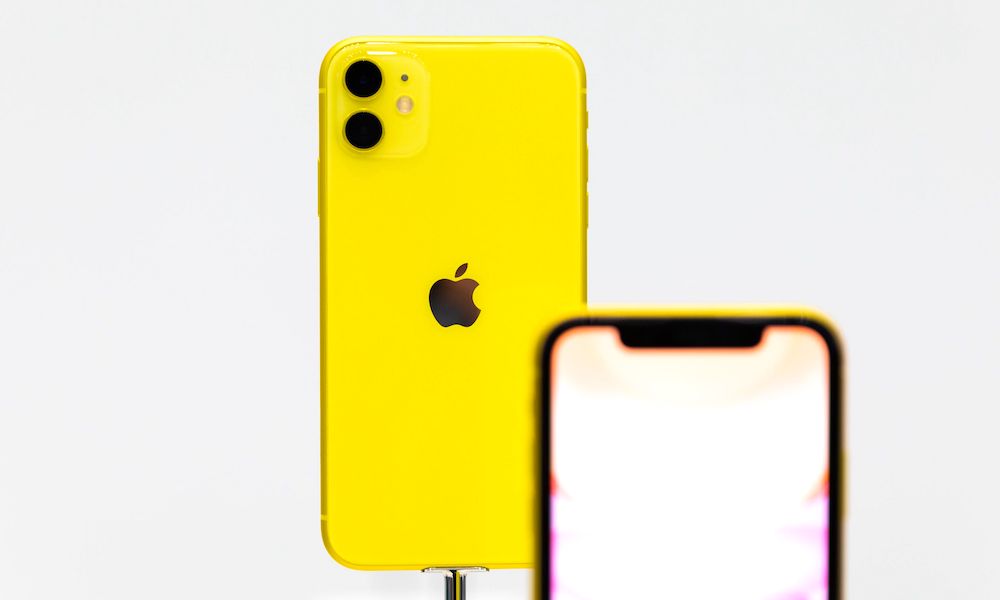Ultrafast Wi-Fi 6 Is Officially Here and the iPhone 11 Already Has It
 Credit: James Martin / CNET
Credit: James Martin / CNET
Toggle Dark Mode
Apple has good reasons for delaying a 5G iPhone, but that’s no reason to think that the company is slacking off on adopting those new wireless technologies that actually make sense.
In fact, Apple’s new iPhone 11 lineup packs more new wireless tech under the hood than we’ve seen in any new iPhone in years — possibly ever. First there’s the Ultra Wideband technology that will support Apple’s new tags and indoor navigation — a feature that no other smartphone yet includes — plus Apple has already built support for the newest Wi-Fi standards into the iPhone before they were even made official.
Although we’ve known it’s been coming for a while, the Wi-Fi Alliance just officially announced Wi-Fi 6 today, ushering in a new era of ultra-high-speed wireless networking. The new standard, which is more technically known as 802.11ax, supersedes the the old and well-known 802.11ac and 802.11n standards, which have now been renamed Wi-Fi 5 and Wi-Fi 4, respectively, as part of the Alliance’s efforts to simplify things.
Now that Wi-FI 6 has been officially released, devices using it will have to meet certain standards under the Wi-Fi 6 Certified program to qualify to officially use the designation. Since it’s a safe bet that Apple’s iPhone 11 already meets all of these standards, however, what this really represents is a go-ahead for Apple to officially announce support for the new Wi-Fi protocol.
How Fast Is It?
The theoretical maximum transfer speed for Certified Wi-FI 6 devices is around 10 Gbps, but in practical terms they’re expected to be 30–40 percent faster than Wi-Fi 5 (802.11ac) devices. This has been borne out in real-world tests conducted by CNET last week.
In more specific terms, this means that you’ll be able to get speeds of up to 1.2 Gbps when using 2.4 GHz frequencies, and up to 4.8 Gbps on the 5GHz band. This of course exceeds the speed of most people’s home internet connections, but that’s rather the point. With gigabit fibre connections becoming more common, it’s a nice bump from the prior 802.11ac (or “Wi-Fi 5”) implementations that couldn’t quite reach the full performance of your fibre connection.
Of course, you’ll need a Wi-Fi 6 router to pull that off as well, and there’s a good argument to be made that most iPhone users don’t really need these kinds of insanely fast speeds, but blazing speeds aren’t the only benefit to Wi-Fi 6.
It’s Not Just About Raw Speed
Wi-Fi 6 will also offer much better performance when there are a lot of devices on the network, which is something else that’s becoming more and more common as internet-of-things (IoT) devices invade our homes and workspaces. We’ve come a long way from the days when a MacBook and iPhone were the only things taking up Wi-FI bandwidth. Now you’ve got television sets, A/V receivers, light switches, doorbells, smart locks, thermostats, and even refrigerators all looking for a piece of your Wi-Fi.
This means that you’re more likely to get maximum performance even when you have more devices on your network, partly due simply to the larger bandwidth available overall, but also because Wi-Fi 6 will manage it all much more efficiently. This will also be especially noticeable at business, school, or public Wi-Fi access points, where having dozens or hundreds of devices sharing the same Wi-Fi network has often resulted in the kind of performance hits that can drag users down to 3G cellular speeds.
Wi-Fi 6 is also more power-efficient than older implementations, which will be great for mobile devices like the iPhone. All of the new iPhone 11 models already offer impressive battery life, and if you’re using a Wi-Fi 6 router at home, this will get even better.
What Does This Actually Mean?
It’s important to keep in mind that Wi-Fi 6 isn’t going to magically speed everything up. For most people, your internet connection is still likely to be your biggest bottleneck, so even if you go out and buy a Wi-Fi 6 router, unless you’ve got a gigabit or better connection to the internet, you’re not going to see much difference, especially from your iPhone.
Unlike 5G cellular, however, Wi-Fi 6 is something that is under the direct control of many consumers, so it makes sense for Apple to at least give users the option. While we’d generally recommend waiting until things settle down a bit, if you’re wiling to pay the premium, you can buy a Wi-Fi 6 router now, and in many urban areas you can get a faster internet connection that will take advantage of it too.
In most cases, though, the adoption of Wi-Fi 6 by the iPhone is more about the future than the present. With the standard now official, we’ll likely see businesses and schools buying into it within the next year or two, meaning you’ll soon be able to take advantage of better performance on more typically congested networks, especially in crowded spaces like stadiums and airports. We think that’s far more promising than what carriers will be able to offer in the near term with 5G.






